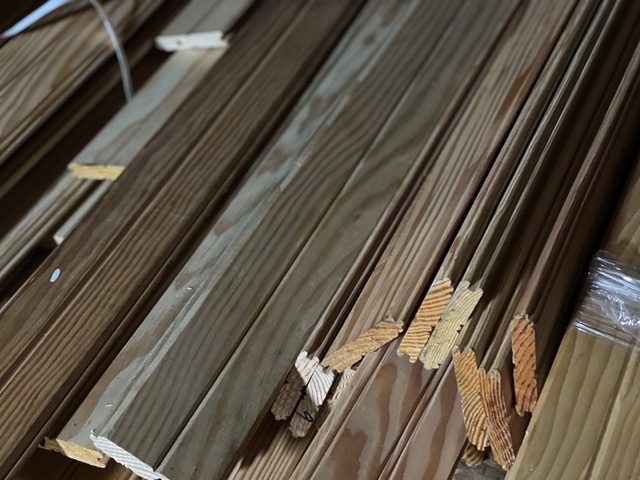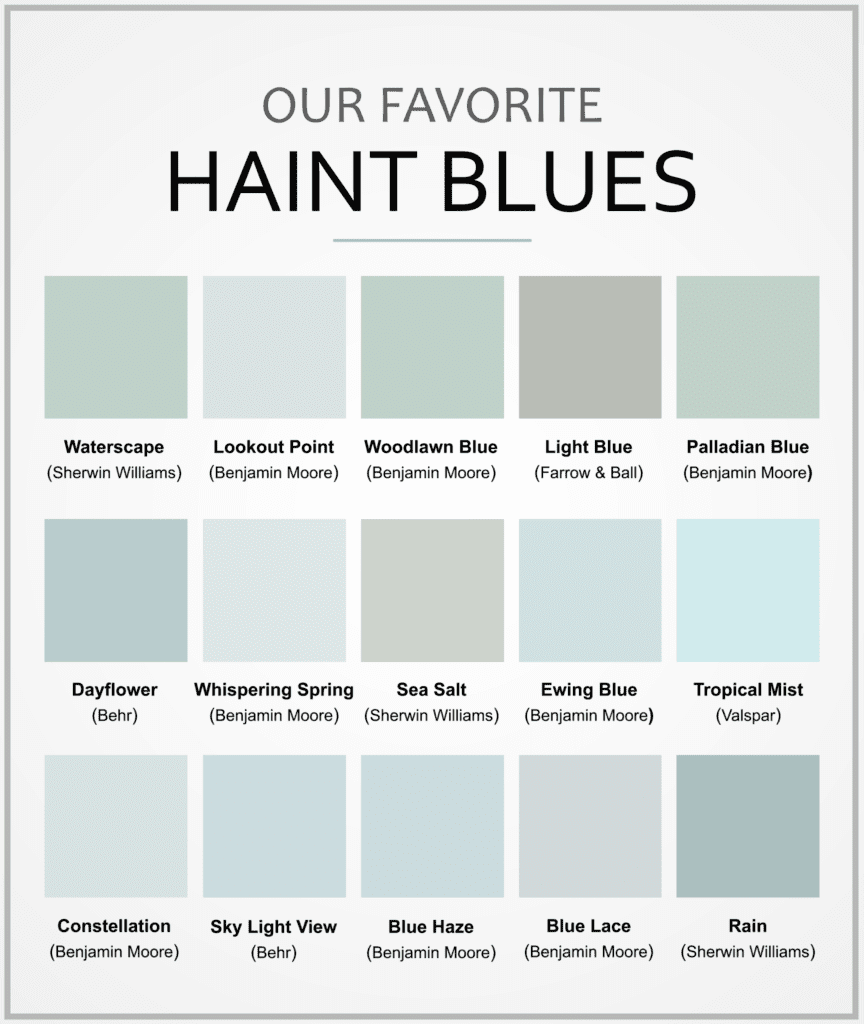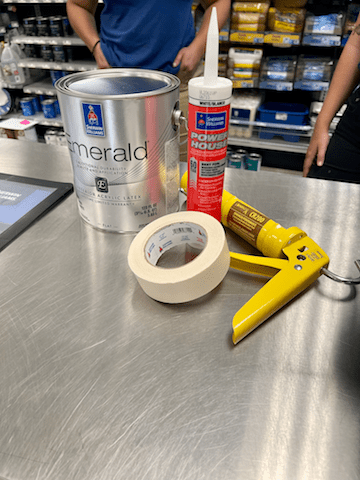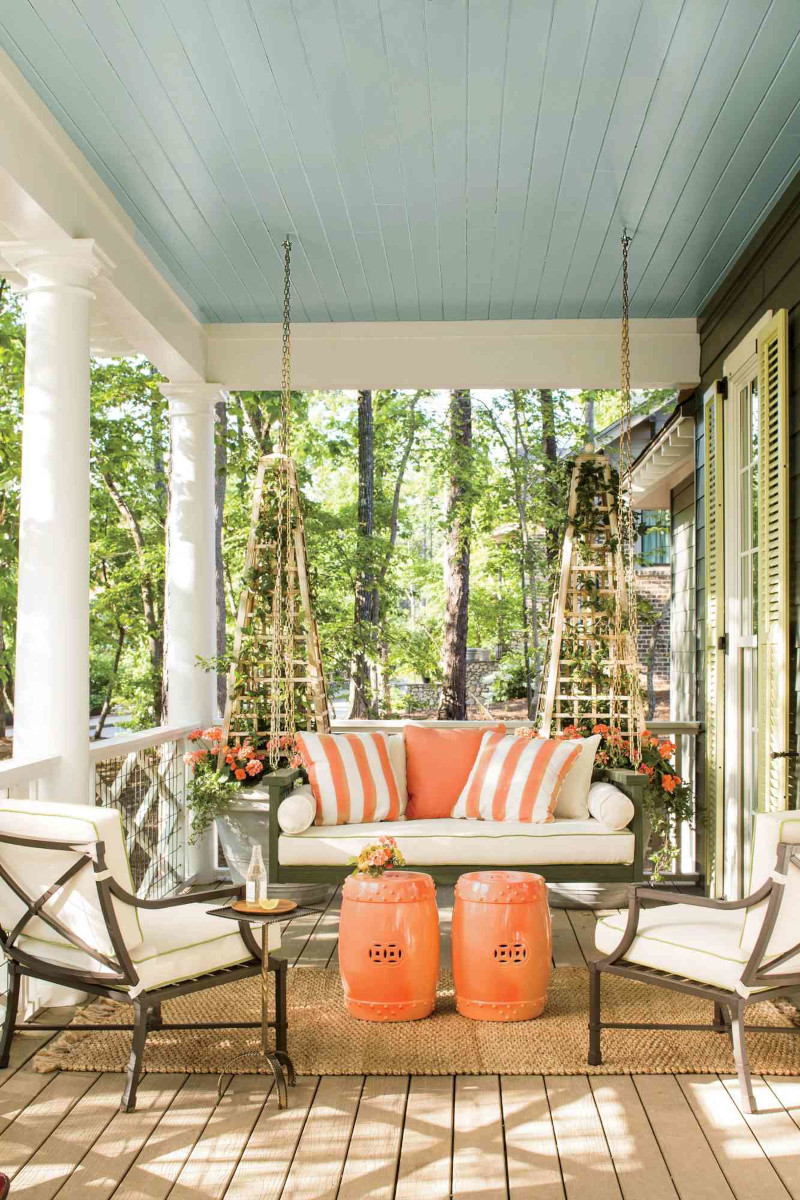Learning about a Southern tradition that has made its way to our Milwaukee remodeling projects
Blue porch ceilings are a Southern tradition in the United States, but they are becoming increasingly popular all over the world, including in our Milwaukee remodeling market. A blue porch ceiling can be a great pop of color when you are remodeling the exterior of your home. They can also enhance curb appeal and create a sophisticated and calming entryway.
Piazza blue, or “Haint” blue is a soft, blue-green paint color first documented in antebellum plantations in the early 1800s. It is thought to have quickly spread to coastal communities in Georgia and South Carolina. Not only would ceilings be painted blue, but also shutters, porches and windows. This southern staple has inspired designers and homeowners to iterate on this tradition. It has now become common to use many shades of blue to enhance exteriors all across the country. The following historical context might help you consider ditching your brown beaded porch ceiling in favor of a cool blue.

Why Porch Ceilings Were Traditionally Painted Blue
- Descendants of African slaves brought to Charleston, SC in the 1500s, the Gullah people have a strong belief in mysticism. The word haints translates to “wandering spirits”, which the Gullah people believe can do harm to the living. A blue porch ceiling was believed to ward off the evil spirits by creating the illusion of water, which the spirits cannot traverse. This is where the famous Southern blue gets its unique name.
- Blue painted porch ceilings were a tradition often found on relative’s homes.
- There is speculation that haint blue was merely a design choice which points to why blues are becoming popular with today’s design-savvy remodeling clients.
- Ceiling blue imitates the color of the sky so that at night, or on a dark day, the glow of the porch light gives the feeling of being under a clear sky on a beautiful day. When the sun sets early, it never hurts to give the impression of a longer day.
- Some believe the blue color confuses insects such as spiders and wasps, as well as birds who mistake the ceiling for the sky and in turn seek other overhangs under which to build their homes. Antique paints were mixed with lye, a metal hydroxide commonly associated with traditional soap production, which is a natural bug repellent. The use of lye in milk paints points to the paint and not the color having this effect on wildlife.
- Blue is a soothing color that cools and evokes calm.
Popular Blues For Your Porch Remodeling Project
Reproducing the perfect “Haint” blue can be difficult and it is prudent to test a few colors instead of making your choice from a color deck. As with any paint color, the lighting, sun exposure, substrate, sheen, paint age, application method, reflection of surrounding landscape and decor can all affect the perceived color that you loved at the store.
Here is a list of our favorite haint blue paints:
- Sherwin Williams SW 6470 (Waterscape)
- Benjamin Moore 1646 (Lookout Point)
- Benjamin Moore HC-147 (Woodlawn Blue)
- Farrow & Ball No. 22 (Light Blue)
- Benjamin Moore HC-144 (Palladian Blue)
- Behr MQ3-54 (Dayflower)
- Benjamin Moore 2136-70 (Whispering Spring)
- Sherwin Williams SW 6204 (Sea Salt)
- Benjamin Moore CW-585 (Ewing Blue)
- Valspar 5002-7A (Tropical Mist)
- Benjamin Moore AF-540 (Constellation)
- Behr MQ3-53 (Sky Light View)
- Benjamin Moore 1667 (Blue Haze)
- Benjamin Moore 1625 (Blue Lace)
- Sherwin Williams SW 6219 (Rain)

We suggest trying a few samples on your remodeled porch before selecting a color. After you have selected the color, it is important to pick the right sheen. Most commonly we see clients select a satin or eggshell finish, but those with an older home and significant flaws in their wood may select a flat, or matte finish to hide imperfections.

10 Steps For The Application Of Your Favorite Haint Blue Paint
While most of our clients elect to have their blue ceiling painted by us as part of a larger or whole house remodeling project, the method we use can be employed by a careful weekend warrior.
- Decide if a latex, or an oil based paint is right for your application. When we build a new porch or are repainting a recently added porch, we usually opt for a latex paint. If the ceiling is metal, currently stained, or if the beaded ceiling is a species of wood like cedar that leaches tannins, we recommend an oil paint.
- Clean the surface. If there was a grill or something else which caused grease or soot to build up, washing the surface with TSP or another similar cleaner will be necessary for proper paint adhesion.
- Scrape any lose paint or finish off with a carbine scraper. Many of the homes we work on are old, so please be sure to follow lead-safe practices so young kids do not get sick.
- Replace or add nails to any sagging beaded ceiling panels or where the original fastener is rusting.
- Patch any new nail holes with wood filler recommended for outdoor restoration work.
- Sand all nail holes and rough areas down to a 120 grit sandpaper. Although counterintuitive, when preparing a surface for painting such as woodwork or cabinets, we do not recommend sanding past 120 grit. The slightly rougher surface promotes good paint adhesion.
- Caulk any cracks and seams with a long-life paintable siliconized acrylic latex sealant. We like Power House by Sherwin-Williams which has a rated lifespan of 60 years!
- Prime the scraped areas. Oftentimes on old projects where there are several layers of paint, the scraping process will remove large chunks of paint. To fill these, we use a “high build” primer. Our favorite is XIM PEEL BOND by RUST-OLEUM, which is produced right here in Wisconsin! We often apply more than one layer to achieve a level surface. To make the primer as effective as possible, the paint store can add tint to the primer which reduces the number of finish coats needed for coverage when changing colors.
- To achieve a classic look, we often start with a roller and back brush the grooves, but the final coat of paint should be done exclusively with a brush to achieve the old southern look this color scheme deserves.
- Apply at least two finish coats over the primer until you achieve the desired build for effect and longevity.
Adding exterior blue accents during your remodeling project can add curb appeal, connect you to American history, or brighten up your outdoor living areas. If you would like to incorporate a fun color into your next exterior remodeling project, please contact us to discuss your options.

